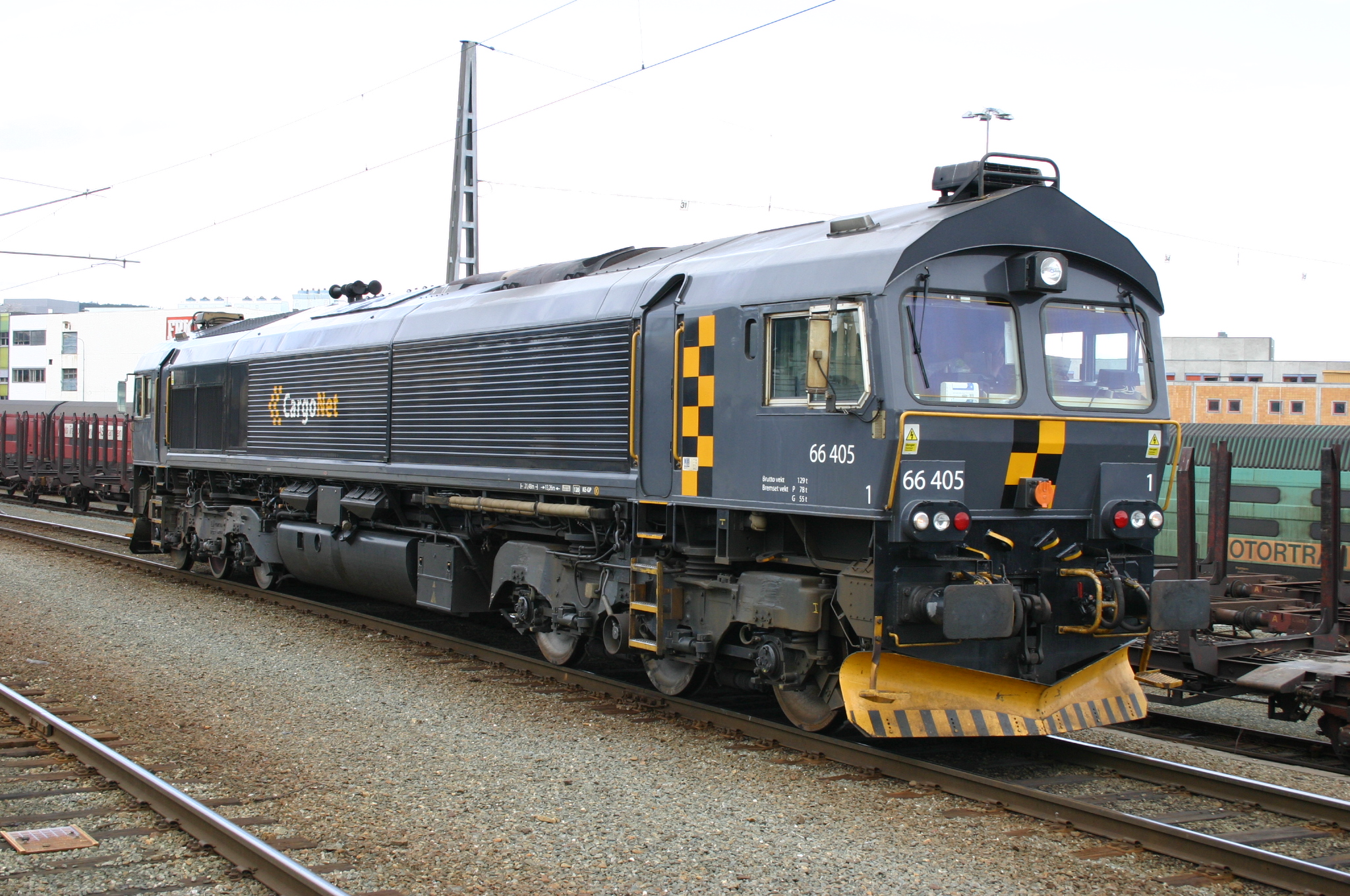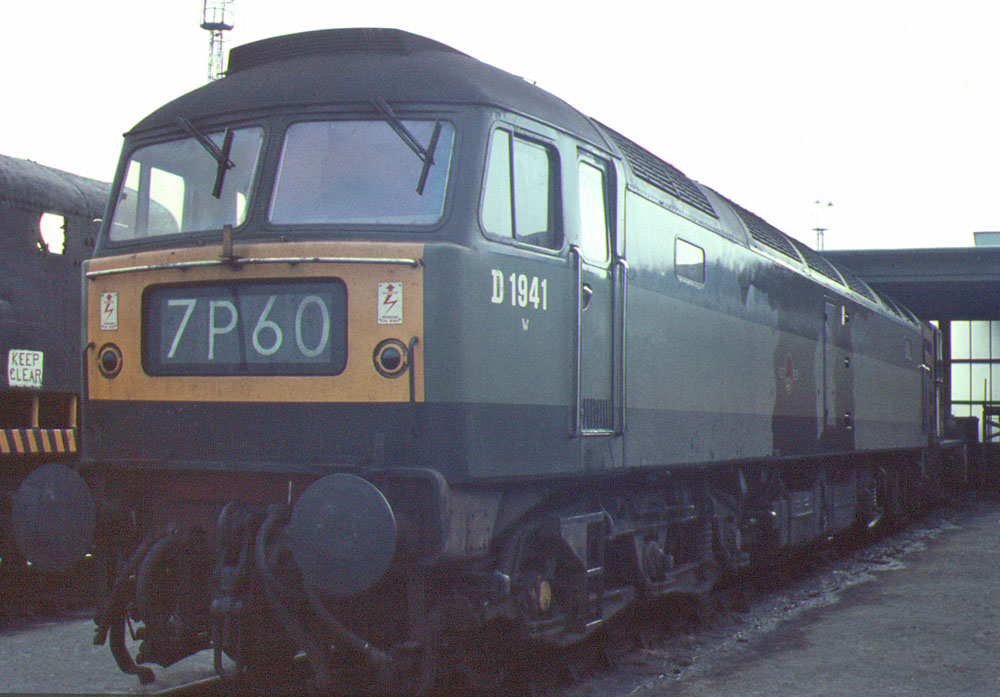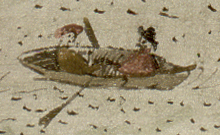|
Advenza Freight
Advenza Freight was an English rail freight company based in Gloucester. It was part of the Cotswold Rail group. The company was wound up in October 2009. History Advenza Freight was founded in 2001. It obtained a safety case in 2002 and a licence to operate from the Rail Regulator on 16 November 2003. The company initially sought guarantees from Network Rail on timing and regularity of train paths, but was only able to obtain permission to "spot bid" for free train paths, and so was unable reliably to secure paths for its trains to be able to commence commercially viable operations. Both types of right have restrictive flex provisions for Network Rail and stipulate a maximum turn round time. It then sought guarantees from Network Rail through the Office of Rail Regulation regarding the provision of paths for its trains, in January 2004, it reached agreement with Network Rail, and was to start running containerised palletised freight from London ( Barking) to Glasgow. Advenza ... [...More Info...] [...Related Items...] OR: [Wikipedia] [Google] [Baidu] |
Cotswold Rail
Cotswold Rail was an English company, based in Gloucester, which arranged the spot-hire of shunting and mainline locomotives. History Cotswold Rail was founded in 2000, initially as a broker for rolling stock. In June 2000, it offered 13 Class 141 ''Pacers'' for sale. In 2001, some Class 08 shunting locomotives were purchased, which were hired to both industry and main-line railway companies. Cotswold Rail also purchased a fleet of Class 47 locomotives. From June 2002 until June 2009, it provided Class 47s for Anglia Railways (and its successor National Express East Anglia), as rescue locomotives, and to haul Mark 2 sets on summer Saturday services from Norwich to Great Yarmouth. In 2004, Cotswold Rail leased 12 former Virgin Trains Mark 3 carriages from Rolling stock company Porterbrook. In April 2005, the company acquired leased some Class 87 electric locomotives. A fleet of ten locomotives was planned, for spot-hire work, charter operations, and a new inter ... [...More Info...] [...Related Items...] OR: [Wikipedia] [Google] [Baidu] |
Cardiff
Cardiff (; cy, Caerdydd ) is the capital city, capital and List of urban areas in the United Kingdom, largest city of Wales. It forms a Principal areas of Wales, principal area, officially known as the City and County of Cardiff ( cy, Dinas a Sir Caerdydd, links=no), and the city is the List of cities in the United Kingdom, eleventh-largest in the United Kingdom. Located in the South East Wales, south-east of Wales and in the Cardiff Capital Region, Cardiff is the county town of the Historic counties of Wales, historic county of Glamorgan and in 1974–1996 of South Glamorgan. It belongs to the Eurocities network of the largest European cities. A small town until the early 19th century, its prominence as a port for coal when mining began in the region helped its expansion. In 1905, it was ranked as a city and in 1955 proclaimed capital of Wales. Cardiff Urban Area, Cardiff Built-up Area covers a larger area outside the county boundary, including the towns of Dinas Powys and Pena ... [...More Info...] [...Related Items...] OR: [Wikipedia] [Google] [Baidu] |
Rail Freight Companies In The United Kingdom
Rail or rails may refer to: Rail transport *Rail transport and related matters * Rail (rail transport) or railway lines, the running surface of a railway Arts and media Film * ''Rails'' (film), a 1929 Italian film by Mario Camerini * ''Rail'' (1967 film), a film by Geoffrey Jones for British Transport Films *'' Mirattu'' or ''Rail'', a Tamil-language film and its Telugu dub Magazines * ''Rail'' (magazine), a British rail transport periodical * ''Rails'' (magazine), a former New Zealand based rail transport periodical Other arts *The Rails, a British folk-rock band *Rail (theater) or batten, a pipe from which lighting, scenery, or curtains are hung Technology * Rails framework or Ruby on Rails, a web application framework *Rail system (firearms), a mounting system for firearm attachments *Front engine dragster *Runway alignment indicator lights, a configuration of an approach lighting system *Rule Augmented Interconnect Layout, a specification for expressing guidelines for pri ... [...More Info...] [...Related Items...] OR: [Wikipedia] [Google] [Baidu] |
British Rail Class 20
The British Rail Class 20, otherwise known as an English Electric Type 1, is a class of diesel-electric locomotive. In total, 228 locomotives in the class were built by English Electric between 1957 and 1968, the large number being in part because of the failure of other early designs in the same power range to provide reliable locomotives. The locomotives were originally numbered D8000–D8199 and D8300–D8327. They are known by railway enthusiasts as "Choppers". Overview Designed around relatively basic technology, the 73-tonne locomotives produce and can operate at up to . Designed to work light mixed freight traffic, they have no train heating facilities. Locomotives up to D8127 were fitted with disc indicators in the style of the steam era; when headcodes were introduced in 1960 the locomotive’s design was changed to incorporate headcode boxes. Although older locomotives were not retro-fitted with headcode boxes, a few of the earlier batch acquired headcode boxes ... [...More Info...] [...Related Items...] OR: [Wikipedia] [Google] [Baidu] |
EMD Class 66
The Electro-Motive Diesel (EMD) Class 66 (or JT42CWR) are Co-Co diesel locomotives built by EMD for the European heavy freight market. Designed for use in Great Britain as the British Rail Class 66, a development of the Class 59, they have been adapted and certified for use in other European countries. Outside Europe, 40 locomotives have been sold to Egyptian Railways for passenger operation. A number of locomotives built for Euro Cargo Rail in France with roof-mounted air conditioning are classed ''Class 77''. In Germany ECR units operated for DB Schenker were numbered as class 247, re-classified as class 266 by the Eisenbahn-Bundesamt to match other Class 66 locomotives operating in Germany. History United Kingdom The class was designed by General Motors-Electro Motive DivisionIn 2005 General Motors sold its locomotive manufacturing division (EMD), the organisation is now named Electro Motive Diesel or EMD for use in the UK, and 250 were sold to English Welsh & Scottish, ... [...More Info...] [...Related Items...] OR: [Wikipedia] [Google] [Baidu] |
British Rail Class 57
The British Rail Class 57 is a type of diesel locomotive that was remanufactured from Class 47s by Brush Traction of Loughborough between 1998 and 2004. In reference to these locomotives being re-manufactured, they are often referred to by enthusiasts as ''Bodysnatchers'' or ''Zombies''. The Class 57 was produced in response to an order placed in November 1997 by the recently privatised freight operator Freightliner. The company sought to have its aging Class 47s, some of which had become increasingly unreliable and uncompetitive in comparison to new-build counterparts. Accordingly, redundant locomotives were handed over to Brush, where they were fitted with re-conditioned Electro-Motive Diesel (EMD) engines and the same model of traction alternator as that fitted to the Class 56 heavy freight locomotive. As a result of this scheme, improved reliability and performance was recorded; Freightliner placed multiple follow-on orders for more to be rebuilt, as would other operato ... [...More Info...] [...Related Items...] OR: [Wikipedia] [Google] [Baidu] |
British Rail Class 47
The British Rail Class 47 or Brush Type 4 is a class of diesel-electric locomotive that was developed in the 1960s by Brush Traction. A total of 512 Class 47s were built at Brush's Falcon Works in Loughborough and at British Railways' Crewe Works between 1962 and 1968, which made them the most numerous class of British mainline diesel locomotive. They were fitted with the Sulzer 12LDA28C twin-bank twelve-cylinder unit producing though this was later derated to to improve reliabilityand have been used on both passenger and freight trains on Britain's railways for over 55 years. Despite the introduction of more modern types of traction, a significant number are still in use, both on the mainline and on heritage railways. As of December 2021, 78 locomotives still exist as Class 47s, including 31 which have been preserved. 33 further locomotives were converted to Class 57s between 1998 and 2004. Origins The Class 47 history begins in the early 1960s with the stated aim o ... [...More Info...] [...Related Items...] OR: [Wikipedia] [Google] [Baidu] |
Rail Express
This tabulation is for periodicals which do not have their own articles. Magazines ''Australian Railway'' * * Published Trade News Corporation * Feb-Mar 1988 is Vol. 2 No. 1. * Last issue about #23 in approximately Aug 1992. * Size = ~A4 ''Australian Railways Illustrated'' * * Bi-monthly * Published April 2010 - April 2015 * Size = ~A4 ''Australian Transport'' * * Published Chartered Institute of Logistics & Transport, Australian chapter * Published 1952 - 1992 * Size = A4 ''British Railways Illustrated'' * * published by Irwell Press; Clophill * first issue: Oct 1991, freq: monthly, Vol 26 No 1 = Oct 2016 * Size A4 * http://www.irwellpress.com/acatalog/BRITISH_RAILWAYS_ILLUSTRATED.html ''Catch Point Magazine'' * * Published by the National Railway Museum, Port Adelaide * Issue : July 2014 is Issue 222. * Size : A5. * Web : www.natrailmuseum.org.au * Email : [email protected] ''Entrain'' * * Published by Platform 5 Publishing, Sheffie ... [...More Info...] [...Related Items...] OR: [Wikipedia] [Google] [Baidu] |
Rail (magazine)
''Rail'' is a British magazine on the subject of current rail transport in Great Britain. It is published every two weeks by Bauer Consumer Media and can be bought from the travel sections of UK newsstands. It is targeted primarily at the enthusiast market, but also covers issues relating to rail transport. ''Rail'' is more than four decades old, and was called ''Rail Enthusiast'' from its launch in 1981 until 1988. It is one of only two railway magazines that increased its circulation. It has roughly the same cover design for several years, with a capitalised italic red ''RAIL'' along the top of the front cover. Editorial policy ''Rail'' is customarily critical of railway institutions, including the Rail Delivery Group, the Office of Rail and Road, as well as, since it assumed greater railway powers, the Department for Transport. ''Rail's'' continuing campaigns include one against advertising and media images showing celebrities and others walking between the rails (an uns ... [...More Info...] [...Related Items...] OR: [Wikipedia] [Google] [Baidu] |
HM Revenue & Customs
, patch = , patchcaption = , logo = HM Revenue & Customs.svg , logocaption = , badge = , badgecaption = , flag = , flagcaption = , image_size = , commonname = , abbreviation = , motto = , formed = , preceding1 = Inland Revenue , preceding2 = HM Customs and Excise , dissolved = , superseding = , employees = 63,042 FTE , volunteers = , budget = (2018–2019) , country = United Kingdom , constitution1 = Commissioners for Revenue and Customs Act 2005 , speciality1 = customs , speciality2 = tax , headquarters = 100 Parliament Street, London, SW1A 2BQ , sworntype = , sworn = , unsworntype = , unsworn = , minister1name = Andrew Griffith MP , minister1pfo = Economic Secretary to the Treasury a ... [...More Info...] [...Related Items...] OR: [Wikipedia] [Google] [Baidu] |
Tilbury
Tilbury is a port town in the borough of Thurrock, Essex, England. The present town was established as separate settlement in the late 19th century, on land that was mainly part of Chadwell St Mary. It contains a 16th century fort and an ancient cross-river ferry. Tilbury is part of the Port of London with a major deep-water port which contributes to the local economy. Situated 24 miles (38.5 km) east of central London and 23 miles (37 km) southwest of Southend-on-Sea (the nearest city), it is also the southernmost point in Essex. Etymology The name of the present town of Tilbury is derived (by way of the port) from the nearby settlements of East and West Tilbury. The name of these settlements is derived from the Saxon ''burgh'', "fortified place", either belonging to Tila, or perhaps at a lowland place. The 8th century spelling ( Bede) was "Tilaburg", and the spelling in Domesday was "Tilberia". History Tilbury's history is closely connected with its geographical loc ... [...More Info...] [...Related Items...] OR: [Wikipedia] [Google] [Baidu] |
West Burton Power Station
The West Burton power stations are a pair of power stations on the River Trent near Gainsborough, Lincolnshire, England. West Burton A is a coal-fired power station, which was commissioned in 1966, and West Burton B is a combined cycle gas turbine power station, commissioned in 2013. West Burton A is owned and operated by EDF Energy, while West Burton B is owned and operated by EIG Global Energy Partners. The station has been accredited as an Investor in People since 1995 and ISO accredited (ISO 14001) for its environmental management system since 1996. The power station won a RoSPA President's Award in 2006, 2007 and 2008. The site is the farthest north of what was a series of power stations in the Trent valley, being downstream of the now-closed Cottam power stations. As of September 2022, it is one of only three coal-fired power stations left in the UK and will need to close before 2024, with generation on two units currently planned to cease on 30 September 2022. Due to ... [...More Info...] [...Related Items...] OR: [Wikipedia] [Google] [Baidu] |





